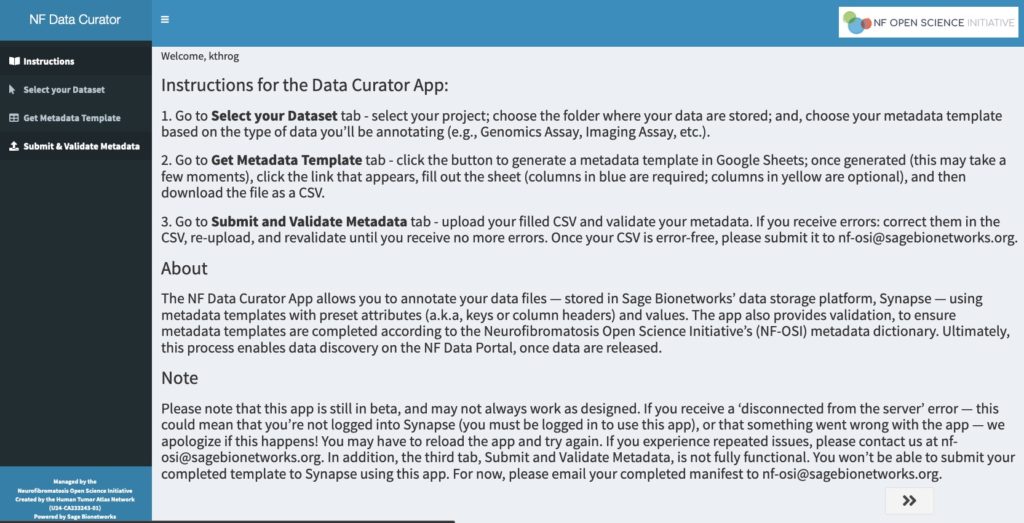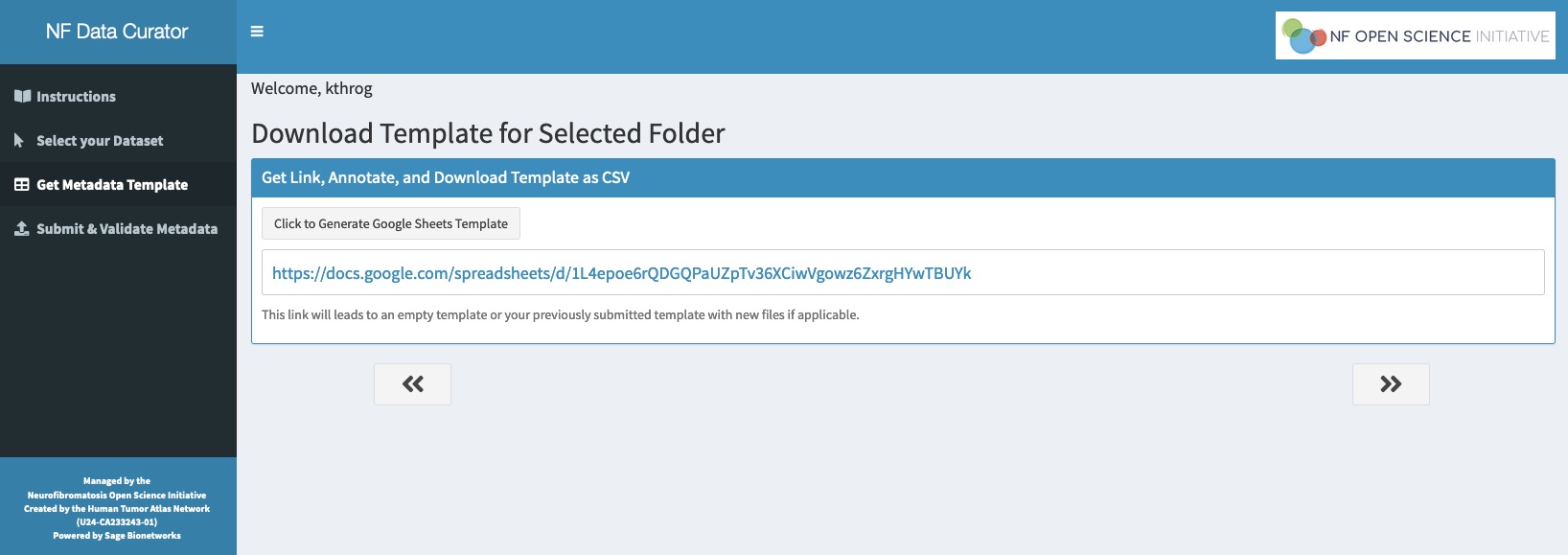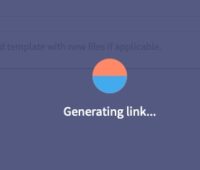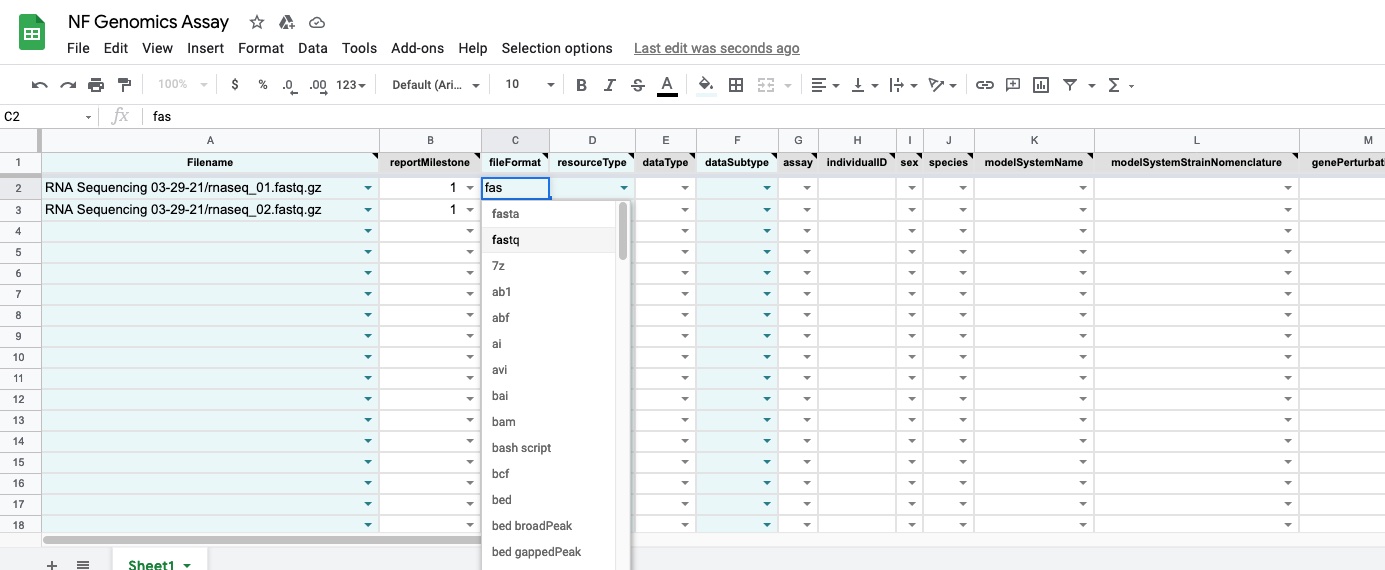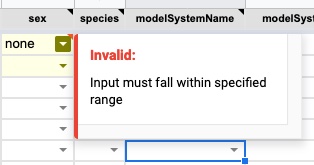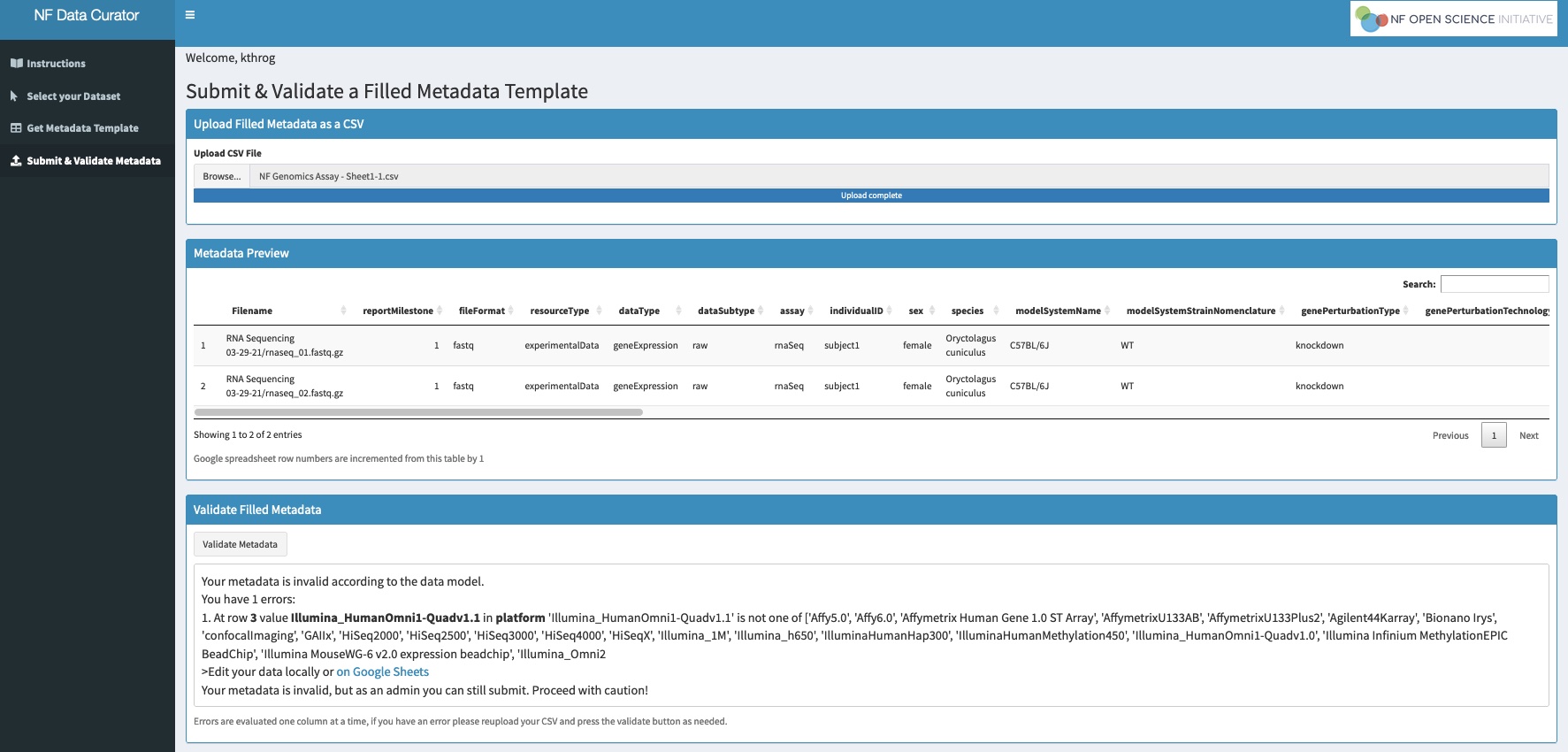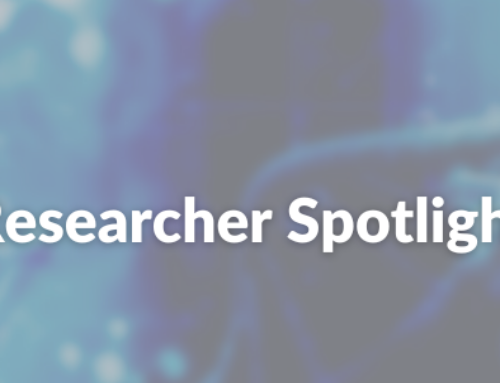We’re thrilled to announce that the NF Annotation App – NF Data Curator – is now available in beta.
NF-OSI aims to increase collaboration, fuel important discoveries, make rare disease data more accessible to the community, and make open science a standard practice in NF research.
What are metadata and annotations?
Metadata helps get us one step closer. Annotations offer information about the data itself, contextualizing the data and helping to make data more discoverable and accessible. You can think of annotations as notes to yourself and your lab, notes that would help you re-run the experiment, hand the work off to a colleague, and eventually, enable data reuse among external collaborators and the wider NF community.
NF Data Curator: Our New Annotation App
Want to try it out? Be sure you’re logged into Synapse, access the app, then follow the instructions. Please note that because the app is in beta, you may experience glitches, and some features may not work as designed. Still, we welcome your experimentation with the app, and hope it improves the experience of annotation for you.
Need help, or have feedback on the app? Email nf-osi@sagebionetworks.org or visit us during NF Office Hours, April 20, 2021,10:30 – 11:30 AM PST.
Walk Through the App
Want to walk through the app before testing it out? See the screenshots and instructions in the gallery and captions below, which will guide you through how to use the app step by step.
Captions:
- Main landing page with instructions.
- Using the left sidebar, navigate to the second tab, ‘Select Your Dataset.’ From this screen, you’ll select your project (be sure you’re logged into Synapse first!), the folder containing the files you want to annotate, and the metadata template that corresponds to your files (e.g., fastq files = genomics assay). Once you’ve selected everything, click the next arrow on the right.
- The third tab, ‘Get Metadata Template,’ you’ll click the button to generate a metadata template in Google sheets. This may take a minute or so. Once done, click the link to view your metadata template.
- It may take a minute or so to generate your template link. You’ll see this waiting screen.
- Your generated Google Sheets metadata template. Notice that your data files have been automatically pulled into the template’s Filename column. Hover over column headers to read a description of them. Start typing in a field to find controlled values (such as fileFormat = fastq in this example).
- Here’s an example of completed metadata for the first couple of columns for two fastq.gz files, as well as an example of what description dropdowns look like.
- An example of an invalid metadata warning. ‘none’ is not a term in our dictionary for sex; the only valid options are ‘female’ and ‘male.’ Please correct these errors — however, note that if you don’t see a term you need in the dropdown, this may mean we need to add it to our metadata dictionary. Please let us know about these missing elements! We’re always adding to our dictionary.
- Once your annotations are complete, you can try to validate and submit your annotations. Once they validate, a ‘Submit to Synapse’ button should appear; click and wait until a notification appears telling you they’re submitted. Note that this part of the process may be a bit glitchy. If you can’t get your annotations to validate, please submit them to nf-osi@sagebionetworks.org and we’ll submit them for you.

